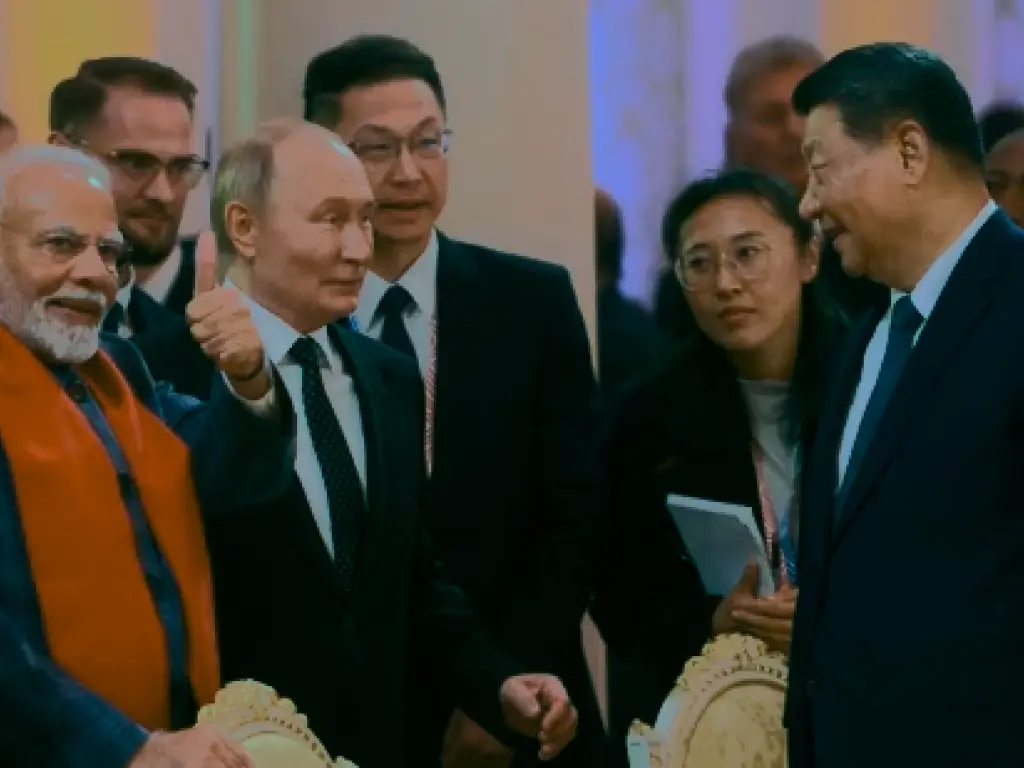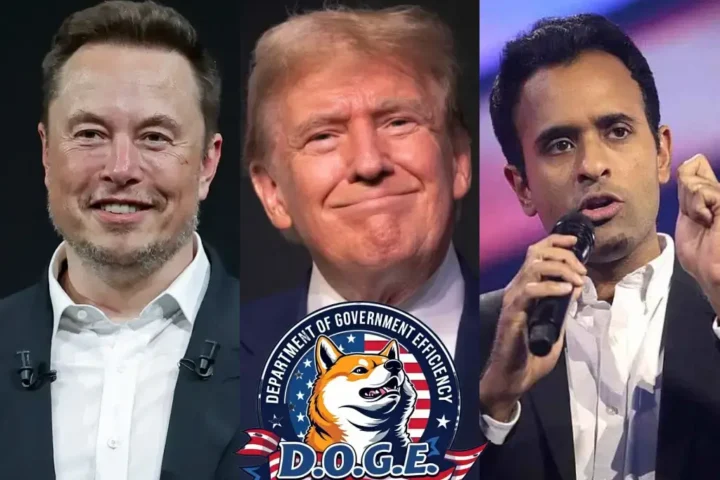Table of Contents
As BRICS moves to add new members and strengthen its influence, India faces a unique diplomatic challenge: balancing its relations with the Western world with a new and changing BRICS with Egypt, the UAE, Ethiopia, Iran, and others. These new additions have added new vigor to the formation, and BRICS has emerged as a collective entity that offers competition or a different proverbial value system to the existing Western-oriented world order.
At the latest BRICS summit held in Kazan, Russia, representatives of 36 countries showed up with an agenda that included goals, membership expansion in the future, as well as probable ways to seize more authority on the global stage. The UN Secretary-General also contributed to the event, pointing to the growing popularity of BRICS as a collective that is more and more in sync with the Global South.
However, India’s membership presents a balancing act: how does it maintain its special relations with the U.S., Canada, and other Western partners, cementing its status inside a BRICS seen by some as a G2 or even a `Wests’ challenger? India also has some diplomatic issues with Canada and blames Trudeau for the diplomatic crisis.
BRICS as an Alternative Power
Since its inception in 2006 as a new formation of young DI, especially in the emerging market, BRICS has crafted itself as an antistructure to Western-driven institutions. India, perhaps the most ‘‘Westernized’’ of the group’s core members, stands to gain a lot from BRICS expansion. Egypt was added as a new trade and security partner, and the UAE was added as a close ally and important economic partner for India. In addition, Ethiopia opens up a new opportunity for India in Africa for the first time; conversely, Iran’s membership might strengthen India’s existing investments in infrastructure.
And yet for India, the greatest benefits still accrue to the original members of the BRICS organization. It also gives Delhi a chance to let Moscow know that Delhi is on friendly terms with Russia and cautiously warm up its relations with China. More recent discussions carried out about India and China are examples of tension reduction, albeit incremental and diplomatic efforts.
In the case of India in BRICS, strategic autonomy, which is the core concept of Indian foreign policy, is achieved. It allows India to interact with several others at the international level without full identification with any of them. Just like India’s active participation in the Indo-Pacific Quad along with the US, Japan, and Australia and its equally strong economic and geopolitical relations with the Western liberal democracies, similarly, its flexible participation in BRICS.
Parallelism of Objectives with BRICS Agenda
Like its priorities, BRICS has goals that are aligned with India. The organization supports multilateralism, United Nations reform, and South support, all of which are aligned with India’s goals. This paper sees that BRICS’ demands for a rethink of the Western sanctions system fit India’s trade profile with certain countries, such as Russia and Iran.
However, India seems to be facing the corporate challenge of managing BRICS’ ever-assertive political posture as an embodiment of a rising collective counter to the West. The addition of Iran, and maybe Cuba and Belarus in the future, may give the BRICS an apparent anti-Western tilt, which is not favorable for India, which enjoys Western association. However, with new members such as the UAE joining or future potential members such as Turkey and Vietnam, the coalition is far from becoming an anti-West block.
BRICS’ Internal Dynamics
BRICS’ path can still be considered to be conditioned by the economic and geopolitical roles of members. Critics have doubted the organizational cohesiveness regarding certain issues. Though there has been recent activity at the summit that shows this, the climate change, technology, and health work where cooperation with the West doesn’t interfere can be supported.
But the thing is, despite the growing vision for BRICS, it has failed to make a progressive movement continuously. For example, an international payment system that was being proposed as a means of reducing the use of the greenback is sharply challenged. Integration of dollars in the BRICS economy is evident, and thus it’s challenging to cut off this power.
BRICS and India‘s Diplomatic Capital
To India, BRICS is useful for strengthening friendships with peers beyond Western countries and to prove that it is committed to multilateralism. This keeps India’s interest strategy together and serves its foreign policy plan on balancing the multiplicity of players and regions.
As seen earlier, BRICS is supportive of processes that reflect India’s policy priorities. A recent joint statement at the summit pointed to cooperation in public health, technology, and education issues that do not threaten the Western states but buttress the post-West liberal global order. Such areas let India work together without making a statement that could offend its Western partners.
Engagement in BRICS means that India will economically unite with Russia, a major defense partner of India and a major supplier of energy resources. While other Western countries have tried to encircle or sanction Russia, thanks to BRICS, India can remain neutral but not against Russia.
In the China case, BRICS allows India to engage with Beijing cautiously. The latest development in the recent announcement on the agreement regarding the border patrol of the countries can be seen as a major positive step in the lowering of interstate tension, which is an example of how BRICS offer India a diplomatic platform for dealing with such relations.
BRICS’ Path Forward
What lies ahead of BRICS as an organization will greatly depend on the members’ capacity to coalesce the increasing and diverse membership base. However, today most of the member states emphasize other goals and interests; the organization became an instrument for some of their members to demand global governance and financial systems reform. The purpose of achieving this remains similar to other indefinitely ongoing objectives, and it aligns well with India’s principle of supporting multilateralism and the proceedings towards developing representation for the developing world in international organizations.
However, the critical structural barriers are still present. Despite recent enlargements, which in any case were mainly at the initiative of Russia, BRICS appears limited in its capacity to bring about change in the status quo of the existing world order due to the internal divisions within the organization as well as the differences in their economic relationships. As it is with most institutions, India and the other BRICS members have an interest in reform, yet their interests could place serious constraints on the BRICS’s ability to rally for a more unified and stronger front.
To India, the BRICS is a geostrategic counterweight through which it can foster its multi-vector foreign policy and maintain and grow relations with both the West and non-/anti-Western powers. The desire for expansion in the organization could build pressure for more strategic autonomy in India as other countries in the BRICS try to reposition themselves globally. However, given the economic relations that India now shares with the U.S. or other developed countries, it is likely to hedge its bet.
In other words, India’s involvement in BRICS is the perfect combination of both a threat and an opportunity. It enables Delhi to envision and actualize its desire to be a leading actor where it seeks to advance the proposed paradigm shift to asymmetric multilateralism structured cooperation where the Global South is represented and has a composing say. On the same note, continuing internal dynamics within the BRICS also sees to it that the organization therefore ceases to be a counterbalance to India’s Western affiliations.
Thus India has a considerably delicate task: to preserve the balancing of the BRICS’ development with the potential xenophobia, which does not harm India’s strategic partnerships with Western countries. India’s participation in BRICS is strategic, appropriate, and inventive in a foreign policy that wants order, cooperation, and growth values that are unconstructive for the global world, including the BRICS.










